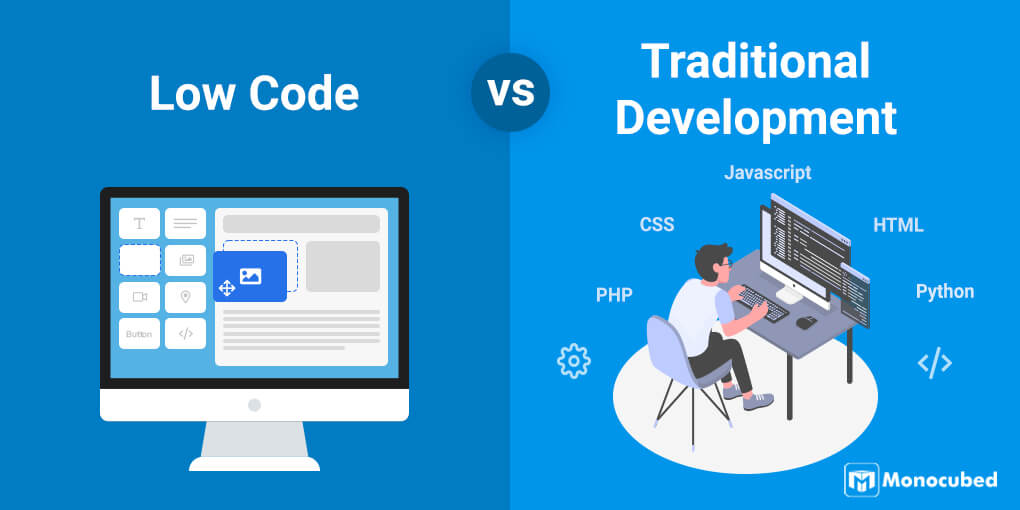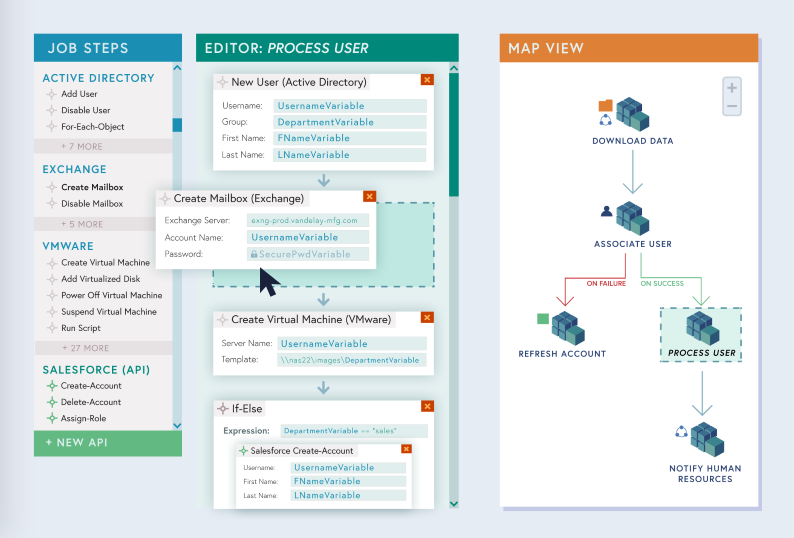Great Advice For Selecting Low-Code Platform Recommendations
Great Advice For Selecting Low-Code Platform Recommendations
Blog Article
Low-Code App Development Is Faster.
The development of applications using low-code significantly improves the speed of development due to a variety of important factors. Development Environment:
Drag-and-Drop Interfaces: Low-code platforms provide visual tools for designing applications. Developers can utilize drag-and-drop tools to quickly assemble applications without writing a large amount of code.
Templates and Components that are pre-built: A lot of platforms that allow low-code support come with components and pre-built template which allow developers to create prototypes quickly and develop applications without having to start entirely from beginning from scratch.
Reduction of Coding Requirements
Automated Coding Generation: Low-code platforms generate the code automatically based on the visual model designed by developers. This eliminates the need for manual coding.
Reusable components: Developers are able to use reusable component across multiple projects, which can reduce the amount of time they're spending writing and testing code.
Collaboration is streamlined:
Low-code development platforms are often equipped with tools, such as deployment control, version control and testing. This allows seamless collaboration between teams.
Citizen Development Business users, non-developers and other stakeholders are able to contribute to application creation by using user-friendly interfaces. This eliminates the bottleneck caused by inaccessibility of experienced developers.
Rapid Iteration and Prototyping
Fast prototyping: Developers can create prototypes quickly to test concepts and get feedback. This can result in a less time spent on iterations.
Easy Modifications: Low-code design is oriented towards visuals, which makes it easier to change and update applications. It can also speed the process of developing and improving applications based on feedback from users.
Pre-built Integrations:
API Integrations: Low-code platforms are often pre-built with connectors to popular APIs and services. This reduces the time needed to integrate external systems.
Data Integration: The tools built into the software simplify and speed up the process of linking databases, data sources, and applications.
Deployment of Scaling:
One-Click-Deployment: A lot of Low-Code platforms offer one click option for deployment. This reduces the amount of time and effort required to deploy an application.
Cloud-based solutions: Cloud-based low-code platforms are able to handle scaling and infrastructure management and allow developers to focus on application logic and functionality rather than deployment logistics.
Overall, the benefit of low-code application development in terms speed lies in the ability of it to simplify and automate many aspects of the development process, enabling quicker delivery of applications as well as more rapid adaptation to evolving requirements. View the best Low-code Platform for application development for website recommendations including database in azure, push notifications android, azure sql server, azure sql server, app modernisation, no code platforms, rapid app development, build with docker, cross platform mobile dev, azure sql databases and more.
Benefits Of Developing Applications Using Low-Code With Respect To Governance And Security
Low-code applications offer several benefits for governance and cybersecurity that are essential to ensure that applications are managed, well-managed and are compliant throughout their lifespan. Here are some of the key advantages.
Unified Management Console : Low-code platforms offer a central management console to allow administrators to manage and oversee every application. This helps ensure that the same governance is maintained across the entire organization.
Role-Based Access Control (RBAC) The majority of these platforms offer robust role-based access control, allowing administrators to define and enforce access policy. This ensures that only authorized users can access or modify specific parts of the app.
Compliance and Regulatory Adherence:
A lot of low-code platforms have built-in compliance features. They are designed to ensure that apps comply with industry standard (e.g. GDPR, HIPAA). They offer tools and frameworks to ensure that the applications meet these requirements.
Audit Trails and Logging : Comprehensive logging, audit trails, and logs are often integrated into organizations, allowing them to track changes and monitor access. They also help to ensure compliance of internal and outside rules and regulations.
Increased Security Measures
Data Encryption. Low-code platforms offer encryption that is built into data at rest as well as while it's being transferred, which ensures sensitive information is kept safe.
Security Certifications: Many companies of low-code software have security certifications such as ISO 27001 or SOC 2, which demonstrate that they adhere to high standards. These certificates offer further assurance to users.
Automated Security Updates
Regular Security Updates and Patches Low-code platforms manage automated security patches, updates and updates. Applications are therefore secured from threats of the present without requiring the intervention of developers manually.
Security Monitoring: Constant security monitoring tools are used to send real-time notifications and information on security problems.
Data Governance
Data Access Policies: These software tools permit companies to establish as well as enforce and monitor data policies. This helps ensure that information is only available to authorized users and that they are used correctly.
Data Masking and Anonymization Tools built in to mask data and safeguard sensitive data, particularly in testing environments and development environments.
Consistent Lifecycle Management of Applications:
Pipelines for Deployment and Development: Low-code platforms often provide integrated pipelines for development and deployment that include security checks, which ensure security is maintained throughout the application lifecycle.
Version Control: A unified version control system can help manage changes, allowing any modifications made to an application to be tracked. If necessary the changes can be reversed and the integrity of the application ensured.
User Authentication & Authorization:
Single Sign-On - Support for single sign-on (SSO) and other advanced methods of authentication makes management easier and improves security.
Multi-Factor Authentication (MFA): Many platforms provide built-in support to multi-factor authentication. This adds an additional layer of security for accessing applications.
Monitoring of Policy Enforcement and Compliance:
Policy Templates: Low-code platforms often have pre-defined templates for policies which allow organizations to swiftly implement governance and security policies.
Compliance Monitoring Tools: They give continuous monitoring and a report on the status of compliance. This makes it easier to identify potential issues and tackle them in a timely manner.
Integration with Existing Security Infrastructure
Seamless Integration: Low-code platforms are designed to work seamlessly with the existing security infrastructure and tools, including identity management tools SIEMs (Security Information and Event Management Solutions), and firewalls.
API Security: Built in API security features help protect data, maintain application integrity and secure integrations.
Training and Best practices
Good practices: Several platforms provide guidelines for creating secure applications, and offer the best practices. This helps non-developers to adhere to security standards.
Security Training: Some providers of low-code software offer education and resources in security that will help users understand how to design and develop secure applications.
Overall, the application's governance and security benefits guarantee that applications are constructed and operated in a secure manner and in accordance with regulations and under control. These platforms come with the frameworks, tools and regulatory compliance that are required to protect sensitive customer data as well as enforce policies and ensure compliance with regulatory requirements and ease the oversight and management of the development process. Read the most popular Enterprise application development with Low-code Platform examples for more tips including develop web application, driver jdbc, database in azure, app modernisation, cross platform mobile development, develop web app, cross platform mobile dev, develop web app, build a docker container, low code platforms and more.
Advantages Of Low-Code Application Development In Terms Of Vendor Support And Community
Low-code development platforms have significant advantages when it comes to support from vendors and the community. These are crucial for successful implementations, ongoing maintenance, and continuous development. Here are a few of the main benefits: Vendor support
Comprehensive Technical Support:
Support Teams Dedicated to You: A lot of low-code platforms provide access to dedicated support teams that can help in technical problems, troubleshooting, and guidance, ensuring that any problems are resolved quickly.
Help is accessible 24/7. Many vendors provide around-the-clock assistance which is particularly useful for businesses that operate in multiple time zones.
Training and Onboarding
Vendors typically offer user-friendly programs, such as tutorials and webinars. They can also offer certificates.
Personalized Onboarding : Many vendors offer customized onboarding services which assist new customers integrate the platform and tailor it to suit their particular requirements.
Updates and Enhancements, Regularly, and Enhancements:
Continuous Improvement: Low-code platforms providers often release periodic upgrades that add new functionality, performance enhancements, and security patches. These updates make sure that their platform stays up to date and secure.
Feedback integration: Vendors often incorporate user feedback into their development cycle to ensure that the platform can meet the ever-changing demands of their users.
Comprehensive Documentation:
Documentation: Comprehensive documentation is provided for the majority of products. It covers everything from the basics to advanced customization. This can help users find solutions for themselves.
API References: API documentation is detailed and helps developers to integrate APIs with other platforms, and to further modify their applications.
Professional Services and Consulting:
Expert Consultation: Vendors frequently provide consulting services to help with planning for strategic purposes architectural design, as well as complex implementations, ensuring that users are able to use the platform to its fullest potential.
Custom Development Services: A few companies will provide custom development services to create features or integrations for their customers which aren't readily accessible.
Community Support
Active User Groups:
Forums and Discussion Panels Many Low-code platforms feature vibrant online communities where users can ask questions, debate strategies, and even collaborate on best practices.
User Groups and Meetups Local and virtual user groups and meetups provide opportunities to network, learn and sharing your experiences with other users.
Collaboration and Knowledge Sharing:
Community-Contributed Resources: Users often share templates, modules, and extensions that they have developed, which can be reused or adapted by others, accelerating development and innovation.
Crowdsourced problem solving: The collective knowledge and experience of the crowd is an invaluable resource for troubleshooting issues and coming up with innovative solutions.
Learning and Development
Community-led Training: Many groups organize workshops, sessions for training and webinars. These are usually led by experienced users, who offer practical insight and advanced techniques.
Tutorials and online courses Community members frequently create and distribute online courses, tutorials and how-to guides, making better educational resources available to all users.
Feedback and Influence
Community Forums for Product Feedback include many channels to provide feedback to vendors, which can help shape the development of new features.
Beta Testing Active communities may have an opportunity to participate. This lets them gain early access to the platform and participate in the creation of the platform.
Recognition and Encouragement
Community Recognition Programs: A lot of vendors have recognition programs to recognize the contribution of community members who are active like MVP (Most Valuable Professional) programs.
Peer support: Community members will often offer peer-to-peer support, offering their expertise and assistance for those less knowledgeable. They foster a collaborative atmosphere by encouraging cooperation and creating a positive atmosphere.
In the end, the combination of of robust vendor support with an active and engaged community results in an extensive support ecosystem to develop low-code applications. This ensures that users have the expertise, resources, as well as collaborative opportunities that they require to be able to build and launch their applications.